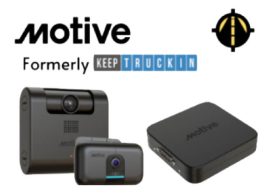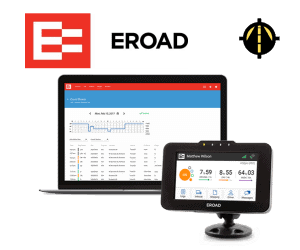In the ever-changing world of fleet management, staying updated with regulatory changes is really important. As the industry evolves, so do the rules that govern it, ensuring safety, efficiency, and fairness.
One of the most talked-about shifts recently has been the changes surrounding truck glider kits in relation to the Electronic Logging Device (ELD) mandate. This alteration not only affects the way fleet managers operate but also reshapes the broader landscape of the trucking industry.
What Are Glider Kits?
Think of glider kits as the perfect blend of the past and present. They merge new truck bodies with previously used engines and transmissions. Their inception was rooted in the idea of maximizing the utility of still-functional components, thereby promoting sustainability.
By reusing major components, trucking businesses could achieve significant cost savings, making glider kits a popular choice for many. Beyond the economic appeal, they also stood as a testament to the industry’s commitment to recycling, reducing waste, and optimizing resources while striking a balance between cost-effectiveness and eco-consciousness.
The ELD Mandate: A Quick Recap
Introduced by the Federal Motor Carrier Safety Administration (FMCSA), the ELD mandate transformed how commercial drivers log their hours of service (HOS). Gone are the days of manual, pen-and-paper logs. Now, electronic devices are the go-to for tracking driving hours.
Why this shift? To enhance road safety. The ELD mandate ensures drivers stick to their designated service hours and take necessary breaks. This approach directly addresses driver fatigue, a leading cause of road mishaps. Plus, going digital means easier compliance and a foolproof way to record HOS.
The Historical Exemption: A Look Back
When the ELD rules first came into play, glider kits got a pass. The reasoning was simple. Glider kits, with their mix of old and new, didn’t quite fit the typical truck profile. Plus,the industry perceived glider kits as a sustainable solution, promoting the reuse of functional parts, which aligned with environmental goals.
But this exemption soon stirred up issues. Some manufacturers saw a loophole, producing glider kits with almost all-new components, sidestepping the ELD’s core purpose. This created an imbalance: some trucks followed ELD guidelines, while others, labeled as “gliders,” did not.
The industry’s varied feedback and rising safety alarms led to a reexamination of this exemption, paving the way for today’s regulations.
The Shift in Perspective: 2022 Rule
In 2022, the FMCSA took a decisive step, revoking the ELD mandate exemption for glider kits. This decision wasn’t made lightly. It stemmed from a growing realization that the exemption, while well-intentioned, was being misused.
Manufacturers, in some cases, were skirting the spirit of the rule, producing glider kits that barely qualified for the exemption. This not only posed a safety concern but also created an unequal environment where some enjoyed undue advantages over their competitors.
The exemption, originally granted in 2017, was intended to encourage the use of recycled parts and to reduce the cost of new trucks. However, the FMCSA found that some manufacturers were assembling glider kits with new engines and transmissions, essentially bypassing the mandate’s intent.
This led to the early elimination of the exemption, which was initially set to expire on September 10, 2023, but was revoked a year earlier. The FMCSA’s primary responsibility is to ensure the safety of the roads, and the unchecked production of these kits posed a potential risk.
Moreover, fairness is a cornerstone of any industry, and the exemption was inadvertently undermining this principle. Thus, the 2022 rule was born out of a necessity to uphold both safety and equity in the trucking sector.
Redefining the Rules: The 2022 FMCSA Decision
In 2022, the FMCSA made a pivotal move, ending the ELD mandate exemption for glider kits. This wasn’t a hasty decision. It came as a response to mounting evidence that, despite its noble intentions, the exemption was being exploited.
Some manufacturers, spotting a loophole, began producing glider kits that barely met the exemption criteria. This not only raised safety red flags but also created an unequal environment where some enjoyed undue advantages over their competitors.
The exemption, originally granted in 2017, was intended to encourage the use of recycled parts and to reduce the cost of new trucks. However, the FMCSA found that some manufacturers were assembling glider kits with new engines and transmissions, essentially bypassing the mandate’s intent.
This prompted the FMCSA to act sooner than planned, revoking the exemption in 2022 instead of its initial 2023 expiration date. The FMCSA’s primary responsibility is to ensure the safety of the roads, and the unchecked production of these kits posed a potential risk.
Moreover, fairness is a cornerstone of any industry, and the exemption was inadvertently undermining this principle. Thus, the 2022 rule was born out of a necessity to uphold both safety and equity in the trucking sector.
What This Means for Fleet Managers
For fleet managers, the 2022 FMCSA decision signals a transformative phase in operations. At first glance, it may appear as an added compliance burden and a potential cost, particularly for those deeply rooted in glider kits. They now face the task of either retrofitting these kits with ELDs or transitioning towards fully compliant vehicles.
But looking past these initial challenges, there’s a brighter horizon. The rule paves the way for a more uniform industry, ensuring everyone competes fairly. This not only streamlines management and adherence but also bolsters the safety standards of entire fleets.
The elimination of the exemption has garnered mixed reactions from the trucking industry. While some see it as a step towards a leveled playing field, others are concerned about the financial implications, especially for small businesses.
The FMCSA has emphasized its commitment to monitoring the use of glider kits and ensuring that all manufacturers and operators adhere to the ELD mandate. For those considering purchasing a truck glider kit, it’s essential to recognize that post-September 10, 2023, these kits must be equipped with an ELD.
In the long run, adhering to such standards can lead to reduced liabilities, fewer on-road incidents, and a reputation for prioritizing safety — all of which can be invaluable assets in the competitive world of fleet management.
Exceptions & Clarifications
While the 2022 rule has made its stance clear on glider kits, there are still nuances fleet managers should be aware of. Notably, the pre-2000 model year exception stands out. Vehicles or engines predating the year 2000 are exempt from the ELD mandate.
This is primarily because older models might not support modern ELD systems seamlessly. For fleet managers, this exception can influence decisions. While older models might seem attractive due to this exemption, they come with their own set of challenges, including maintenance and fuel efficiency concerns.
FAQs
Q: Are all truck glider kits now required to have an ELD post-September 10, 2023?
A: Yes, post this date, all truck glider kits, irrespective of their assembly components, must be equipped with an ELD.
Q: Why was the exemption for truck glider kits initially granted?
A: The exemption aimed to promote the use of recycled parts and reduce the cost of new trucks.
Q: How does the FMCSA plan to monitor compliance with the new rule on glider kits?
A: The FMCSA has committed to continuously monitor glider kit usage and will take enforcement action against any violations of the ELD mandate.
Conclusion
The world of fleet management is in constant flux, with regulations adapting to the changing landscape of the industry.
Staying updated isn’t just about compliance; it’s about ensuring the safety of drivers and other road users.
As we navigate these new rules, it’s crucial to remember that at the heart of these changes lies a commitment to a safer, more efficient trucking industry.














 Answer 5 simple questions to request a
Answer 5 simple questions to request a
2 Responses
ELD’s were never about Saftey.
They are about getting a $35 per month subscription for every truck across the US.
That’s big $$.
Hi Tim,
You’re definitely not alone in feeling this way, many drivers have expressed similar concerns about the costs associated with ELDs. It’s true that they’ve brought about a big shift in the industry, and the subscription fees can feel like just another added expense.
While the original intention was to improve safety and streamline hours-of-service tracking, we understand how it might not always feel that way on the road. Thanks for sharing your perspective, it’s important to keep these conversations going so we could find a better solution! 🙂